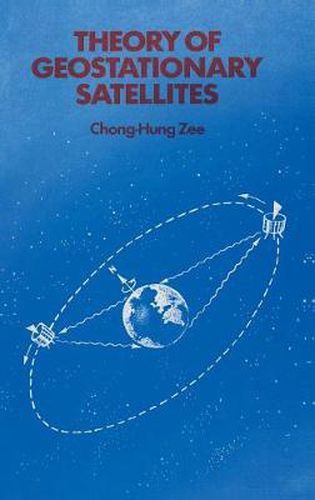Readings Newsletter
Become a Readings Member to make your shopping experience even easier.
Sign in or sign up for free!
You’re not far away from qualifying for FREE standard shipping within Australia
You’ve qualified for FREE standard shipping within Australia
The cart is loading…






This title is printed to order. This book may have been self-published. If so, we cannot guarantee the quality of the content. In the main most books will have gone through the editing process however some may not. We therefore suggest that you be aware of this before ordering this book. If in doubt check either the author or publisher’s details as we are unable to accept any returns unless they are faulty. Please contact us if you have any questions.
Geostationary or equatorial synchronous satellites are a daily reminder of our space efforts during the past two decades. The nightly television satellite weather picture, the intercontinental telecommunications of television transmissions and telephone conversations, and the establishrnent of educational programs in remote regions on Earth are constant reminders of the presence of these satellites. As used here, the term ‘geo stationary’ must be taken loosely because, in the long run, the satellites will not remain ‘stationary’ with respect to an Earth-fixed reference frame. This results from the fact that these satellites, as is true for all satellites, are incessantly subject to perturbations other than the central-body attraction of the Earth. Among the more predominant pertur bations are: the ellipticity of the Earth’s equator, the Sun and Moon, and solar radiation pressure. Higher harmonics of the Earth’s potential and tidal effects also influence satellite motion, but they are of second order when compared to the predominant perturbations. This volume deals with the theory of geostationary satellites. It consists of seven chapters. Chapter 1 provides a general discussion including a brief history of geostationary satellites and their practical applications. Chapter 2 describes the Earth’s gravitational potential field and the methodology of solving the geostationary satellite problem. Chapter 3 treats the effect of Earth’s equatorial ellipticity (triaxiality) on a geostationary satellite. Chapter 4 deals with the effects of the Sun and Moon on the satellite’s motion while Chapter 5 presents the combined influences of the Sun, Moon and solar radiation pressure. Chapter 6 describes various station-keeping techniques which may be used to make geostationary satellites practically stationary. Finally, Chapter 7 describes the verification of the theory developed in Chapters 3, 4 and 5 by utilizing the Early Bird synchronous satellite observed data as well as its numerically integrated results.
$9.00 standard shipping within Australia
FREE standard shipping within Australia for orders over $100.00
Express & International shipping calculated at checkout
This title is printed to order. This book may have been self-published. If so, we cannot guarantee the quality of the content. In the main most books will have gone through the editing process however some may not. We therefore suggest that you be aware of this before ordering this book. If in doubt check either the author or publisher’s details as we are unable to accept any returns unless they are faulty. Please contact us if you have any questions.
Geostationary or equatorial synchronous satellites are a daily reminder of our space efforts during the past two decades. The nightly television satellite weather picture, the intercontinental telecommunications of television transmissions and telephone conversations, and the establishrnent of educational programs in remote regions on Earth are constant reminders of the presence of these satellites. As used here, the term ‘geo stationary’ must be taken loosely because, in the long run, the satellites will not remain ‘stationary’ with respect to an Earth-fixed reference frame. This results from the fact that these satellites, as is true for all satellites, are incessantly subject to perturbations other than the central-body attraction of the Earth. Among the more predominant pertur bations are: the ellipticity of the Earth’s equator, the Sun and Moon, and solar radiation pressure. Higher harmonics of the Earth’s potential and tidal effects also influence satellite motion, but they are of second order when compared to the predominant perturbations. This volume deals with the theory of geostationary satellites. It consists of seven chapters. Chapter 1 provides a general discussion including a brief history of geostationary satellites and their practical applications. Chapter 2 describes the Earth’s gravitational potential field and the methodology of solving the geostationary satellite problem. Chapter 3 treats the effect of Earth’s equatorial ellipticity (triaxiality) on a geostationary satellite. Chapter 4 deals with the effects of the Sun and Moon on the satellite’s motion while Chapter 5 presents the combined influences of the Sun, Moon and solar radiation pressure. Chapter 6 describes various station-keeping techniques which may be used to make geostationary satellites practically stationary. Finally, Chapter 7 describes the verification of the theory developed in Chapters 3, 4 and 5 by utilizing the Early Bird synchronous satellite observed data as well as its numerically integrated results.